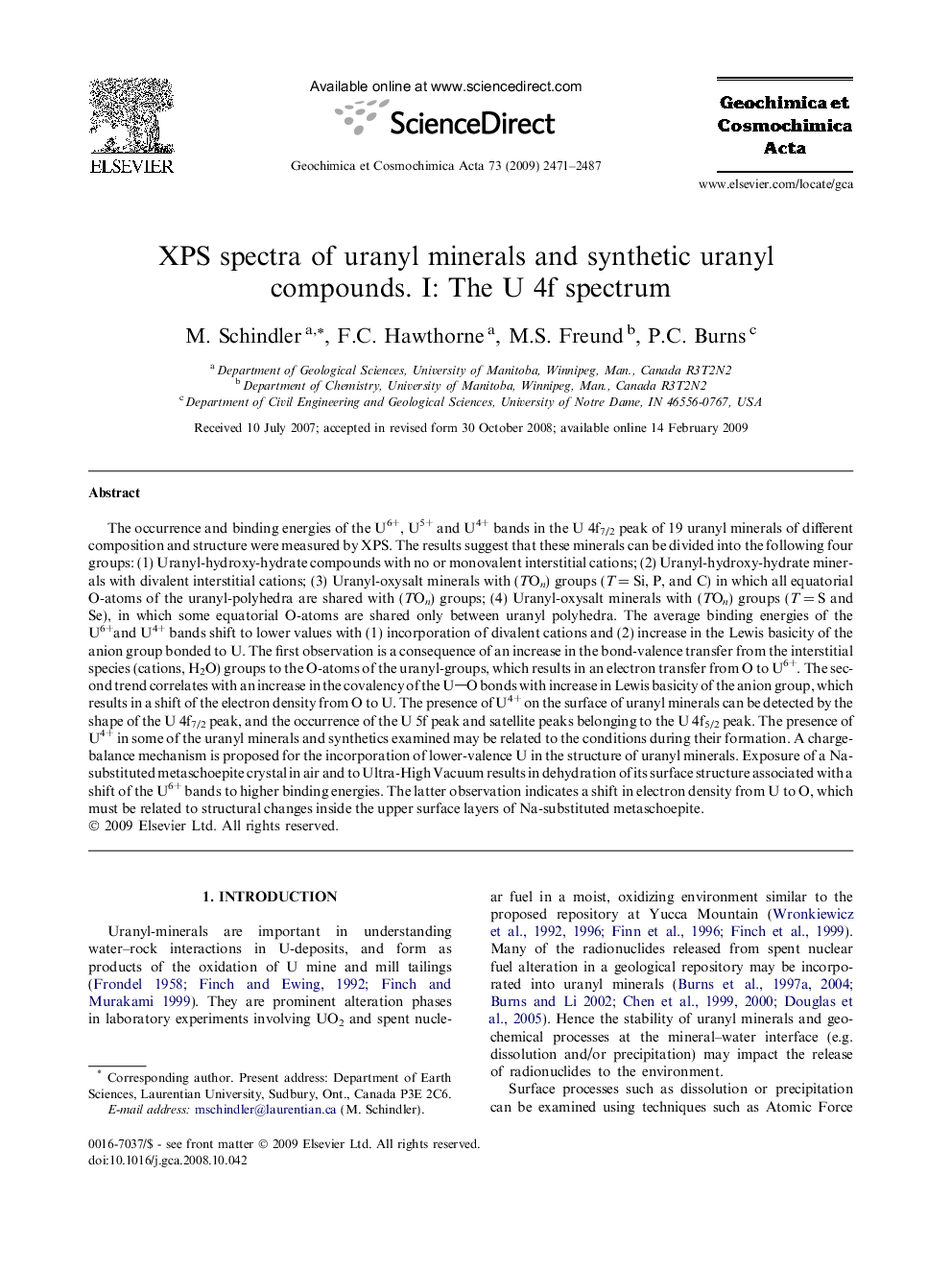| Article ID | Journal | Published Year | Pages | File Type |
|---|---|---|---|---|
| 4705066 | Geochimica et Cosmochimica Acta | 2009 | 17 Pages |
Abstract
The occurrence and binding energies of the U6+, U5+ and U4+ bands in the U 4f7/2 peak of 19 uranyl minerals of different composition and structure were measured by XPS. The results suggest that these minerals can be divided into the following four groups: (1) Uranyl-hydroxy-hydrate compounds with no or monovalent interstitial cations; (2) Uranyl-hydroxy-hydrate minerals with divalent interstitial cations; (3) Uranyl-oxysalt minerals with (TOn) groups (TÂ =Â Si, P, and C) in which all equatorial O-atoms of the uranyl-polyhedra are shared with (TOn) groups; (4) Uranyl-oxysalt minerals with (TOn) groups (TÂ =Â S and Se), in which some equatorial O-atoms are shared only between uranyl polyhedra. The average binding energies of the U6+and U4+ bands shift to lower values with (1) incorporation of divalent cations and (2) increase in the Lewis basicity of the anion group bonded to U. The first observation is a consequence of an increase in the bond-valence transfer from the interstitial species (cations, H2O) groups to the O-atoms of the uranyl-groups, which results in an electron transfer from O to U6+. The second trend correlates with an increase in the covalency of the UO bonds with increase in Lewis basicity of the anion group, which results in a shift of the electron density from O to U. The presence of U4+ on the surface of uranyl minerals can be detected by the shape of the U 4f7/2 peak, and the occurrence of the U 5f peak and satellite peaks belonging to the U 4f5/2 peak. The presence of U4+ in some of the uranyl minerals and synthetics examined may be related to the conditions during their formation. A charge-balance mechanism is proposed for the incorporation of lower-valence U in the structure of uranyl minerals. Exposure of a Na-substituted metaschoepite crystal in air and to Ultra-High Vacuum results in dehydration of its surface structure associated with a shift of the U6+ bands to higher binding energies. The latter observation indicates a shift in electron density from U to O, which must be related to structural changes inside the upper surface layers of Na-substituted metaschoepite.
Related Topics
Physical Sciences and Engineering
Earth and Planetary Sciences
Geochemistry and Petrology
Authors
M. Schindler, F.C. Hawthorne, M.S. Freund, P.C. Burns,
